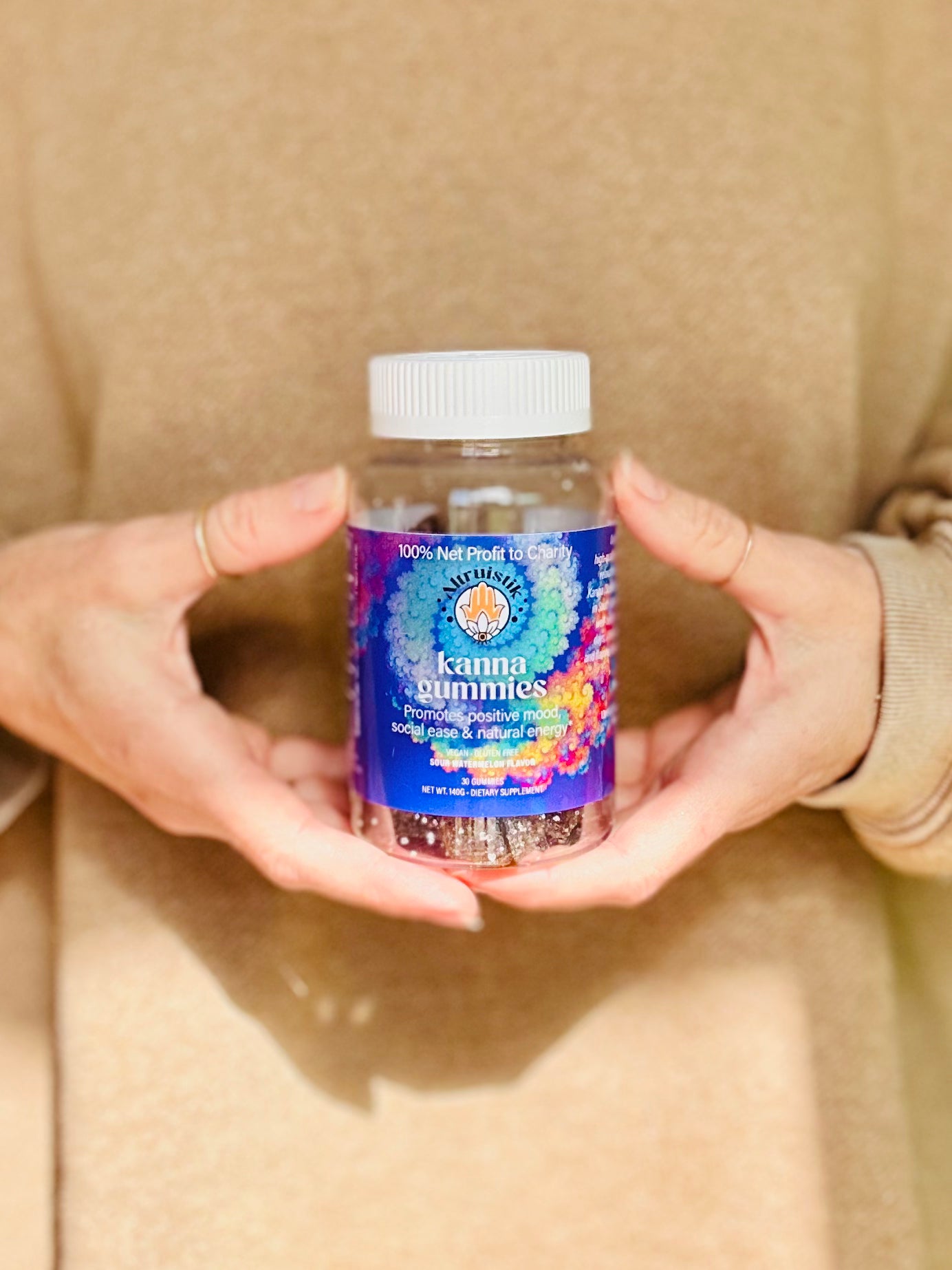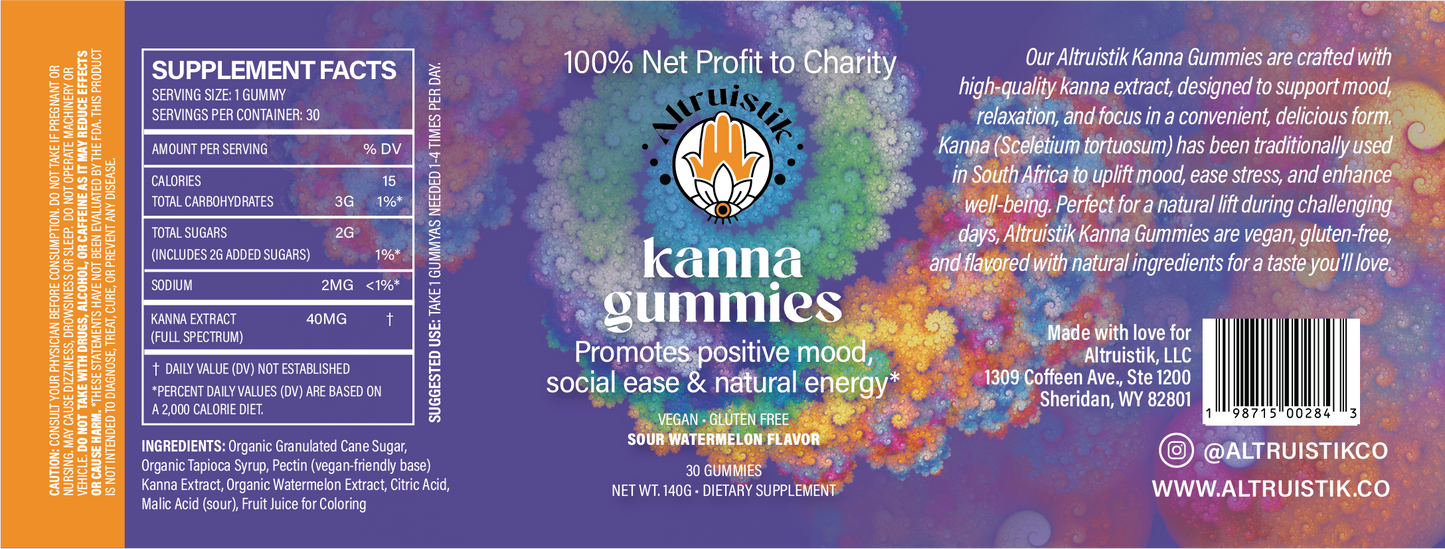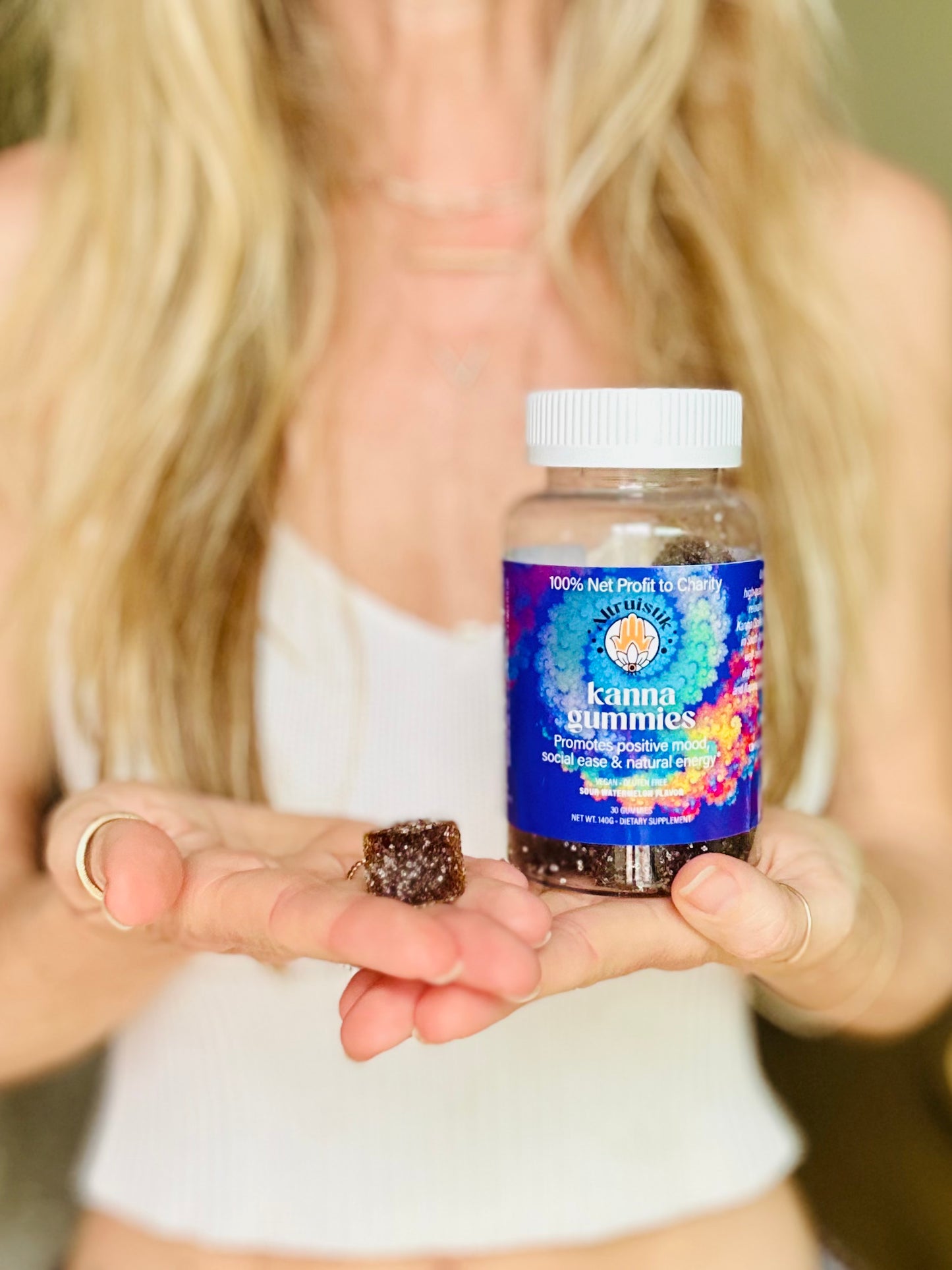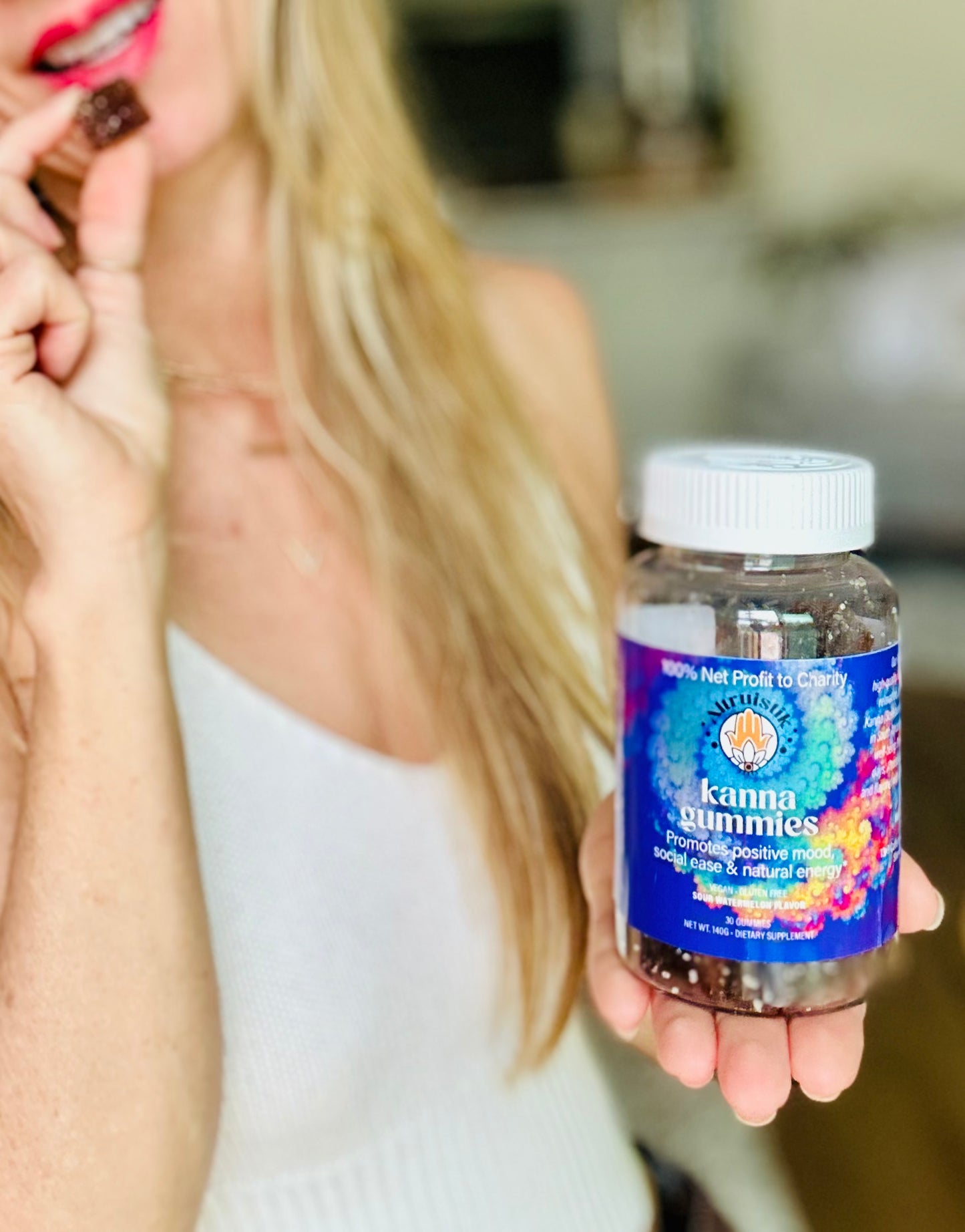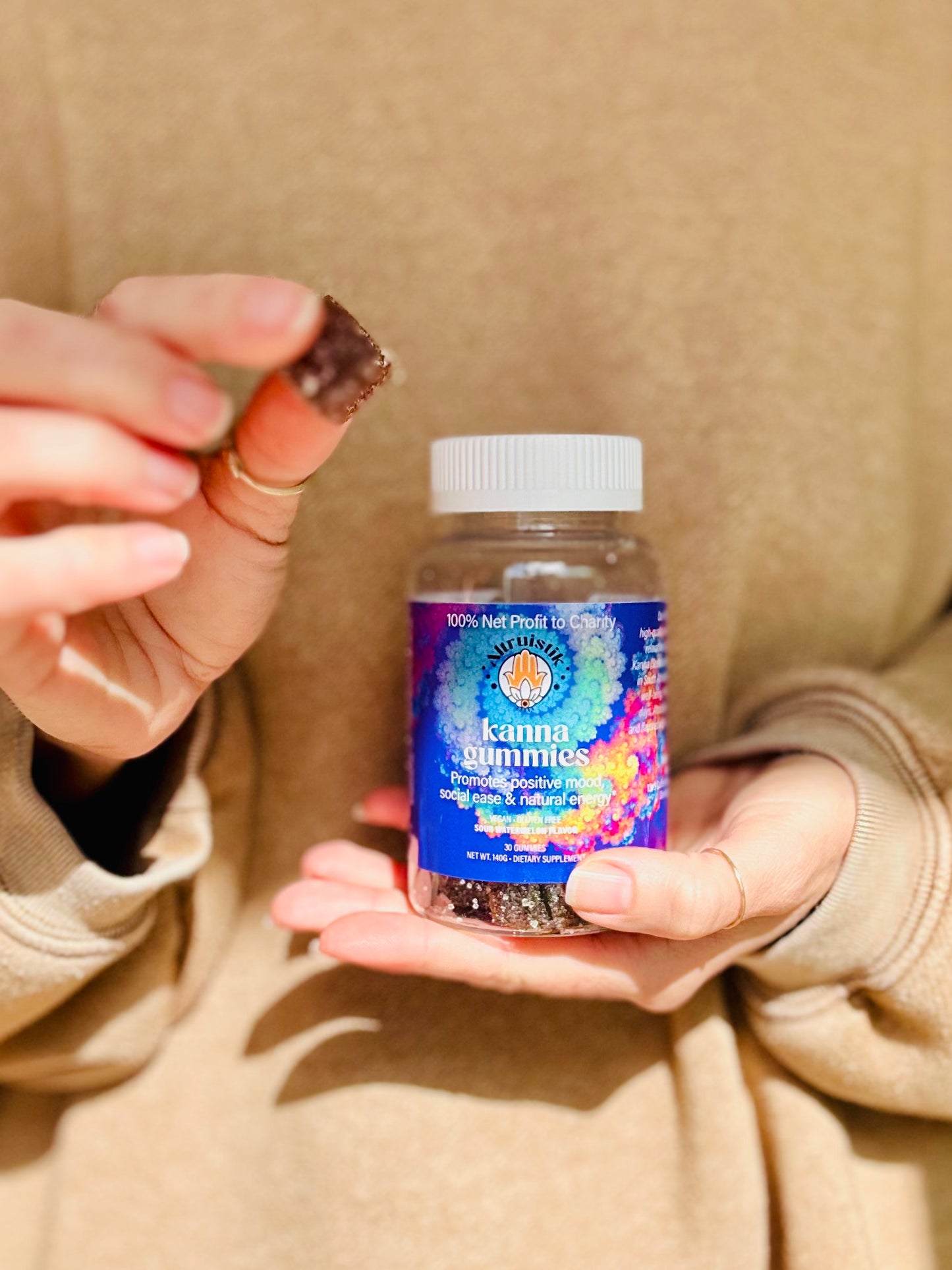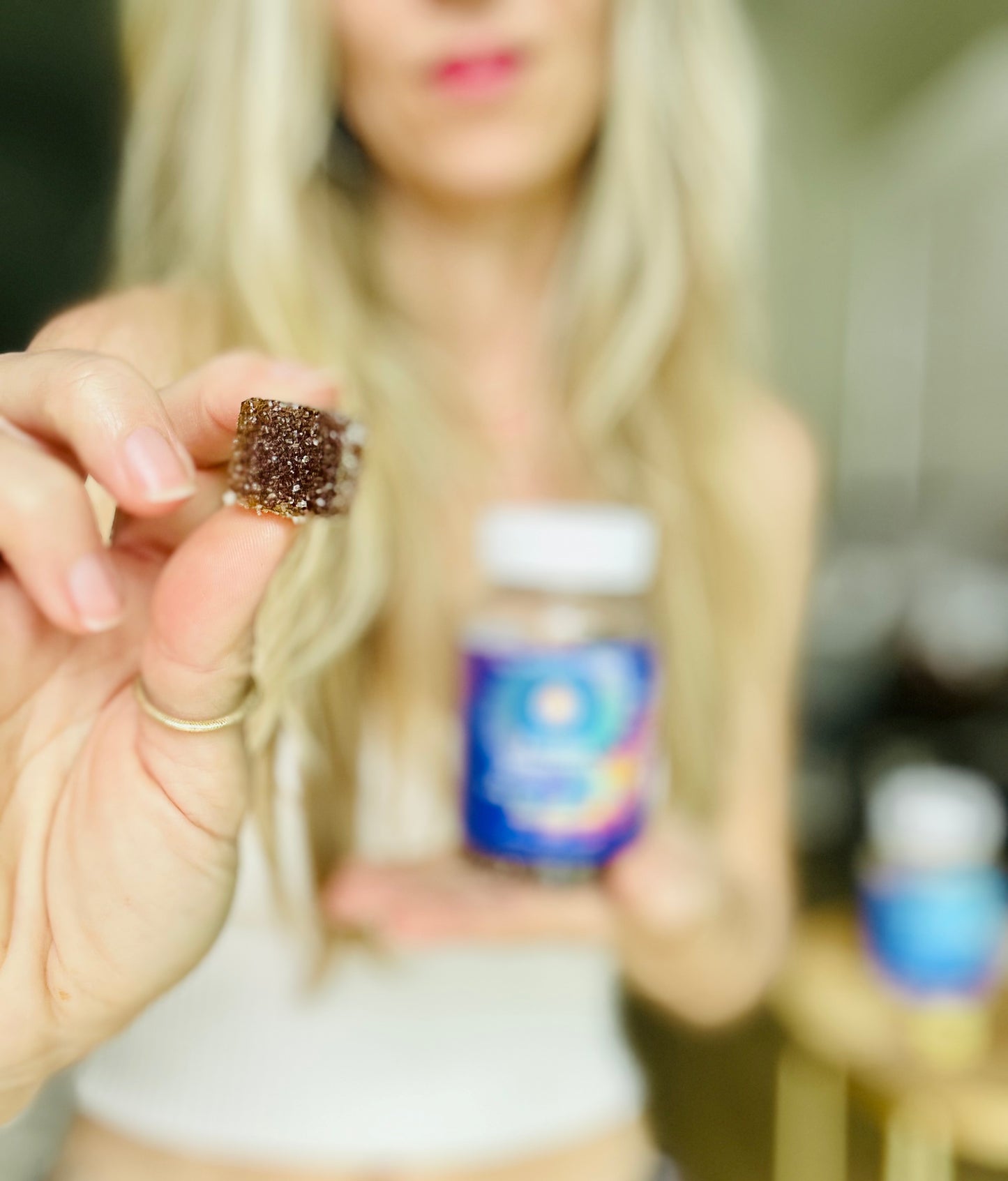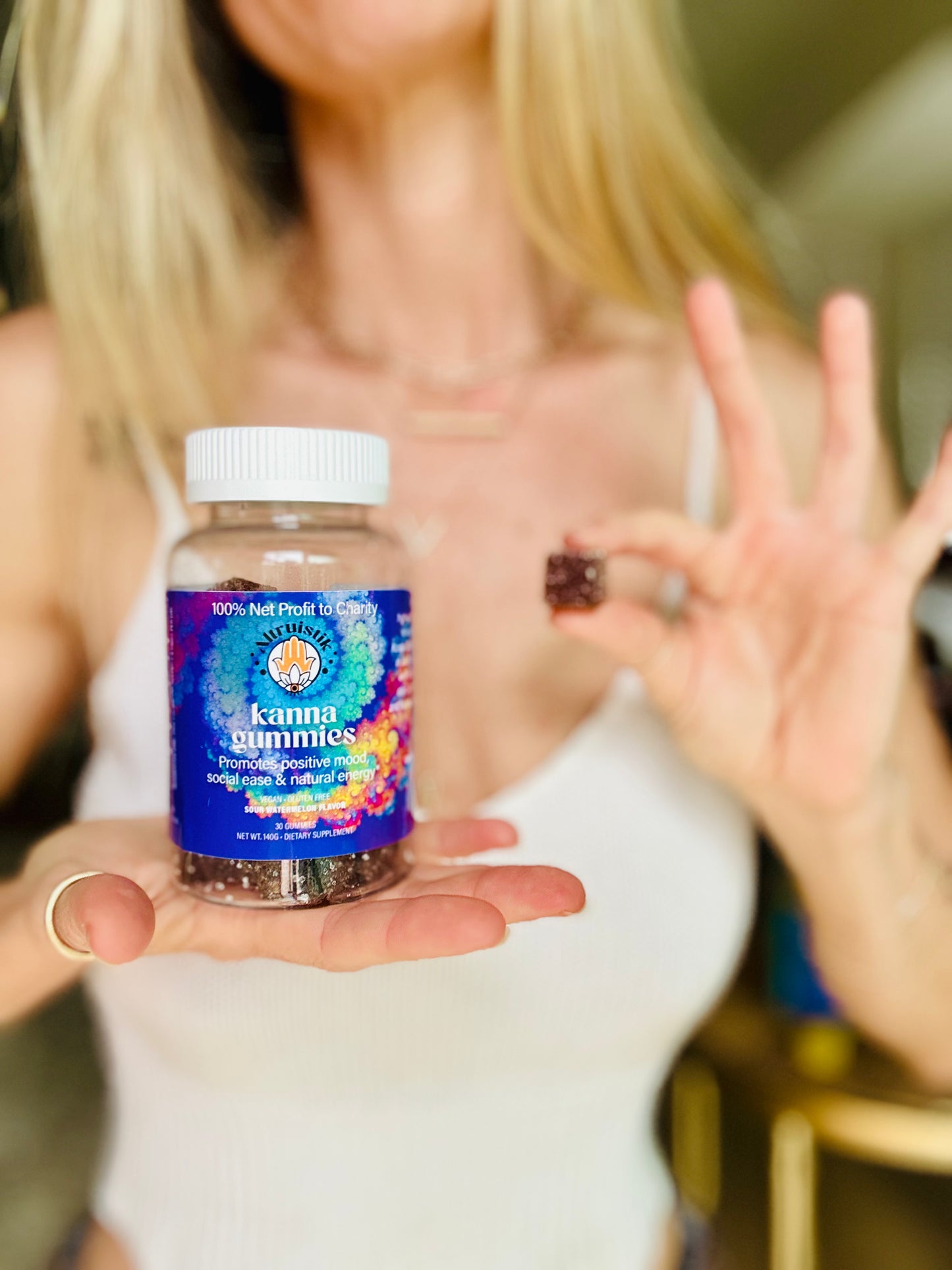Kanna, also known as Sceletium tortuosum, has been used in South Africa for centuries to support emotional balance and mental clarity. This succulent plant contains natural compounds that interact with the brain’s serotonin system, which plays a key role in mood regulation.
Many use Kanna to promote a calm, uplifted state without heavy sedation or overstimulation.

Today, Kanna is gaining attention as a natural option for easing everyday stress and supporting a more positive outlook. It is available in several forms, including powders, teas, capsules, and extracts.
Its effects can vary depending on the dose and method of use. Understanding how it works is essential for safe and effective results.
Those interested in Kanna often compare it to other mood-supporting herbs, but its unique blend of alkaloids sets it apart. Research suggests that it may enhance mood, reduce tension, and improve focus.
Key Takeaways
- Kanna is a South African plant used to support mood and emotional balance.
- It works by influencing serotonin activity in the brain.
- Different forms and dosages can produce varying effects.
What Is Kanna?

Kanna, scientifically known as Sceletium tortuosum, is a small succulent plant native to South Africa. For centuries, people have used it for its calming and mood-supporting properties.
Its history, cultural role, and chemical makeup explain why it remains valued in both traditional and modern plant-based medicine.
Origins and History
Kanna grows naturally in arid regions of South Africa, including Namaqualand, the Karoo, and parts of the Eastern and Western Cape. It thrives in sandy soils and partial shade under shrubs.
Historical records show that the Khoikhoi and San peoples have used kanna for hundreds, possibly thousands, of years. Early European settlers documented its trade and use as early as the 1600s.
The plant’s name, “kanna” or “kougoed,” means “something to chew” in Afrikaans. This reflects one of its earliest preparation methods, where the plant was fermented and chewed to release its active compounds.
Traditional Uses
Indigenous communities used kanna for both practical and social purposes. Hunters chewed it to reduce thirst and hunger during long journeys.
It was also taken to ease fatigue and help manage stress in harsh environments. Traditional healers used the plant in rituals and as part of remedies for mild pain, abdominal discomfort, and mood-related issues.
It could be chewed, smoked, brewed as tea, or made into snuff. In community gatherings, kanna sometimes played a role in promoting relaxation and easing social tension.
Its effects were described as calming without impairing mental clarity. This made it suitable for daily use in certain contexts.
Sceletium tortuosum Explained
Sceletium tortuosum belongs to the Aizoaceae family and is recognized by its small, fleshy leaves with visible “bladder cells.” When dried, the leaves develop a skeleton-like pattern, which inspired its botanical name from the Latin word sceletus.
The plant contains alkaloids such as mesembrine, mesembrenone, and mesembrenol. These compounds interact with serotonin pathways and other targets in the central nervous system.
Today, kanna is available in various forms, including dried plant material, teas, capsules, and standardized extracts. It is still grown in its native regions and is also cultivated for commercial use in wellness products aimed at stress relief and emotional balance.
How Kanna Works as a Mood Booster

Kanna (Sceletium tortuosum) affects brain chemistry by influencing serotonin activity and other neurotransmitter systems. Its active compounds, especially mesembrine alkaloids, interact with receptors and enzymes linked to mood regulation.
These effects can help support a calmer mental state, reduce stress, and improve emotional balance.
Serotonin Reuptake Inhibition
One of Kanna’s main actions is serotonin reuptake inhibition. This means it slows the process of serotonin being reabsorbed into nerve cells after release.
By keeping serotonin active in the synaptic gap longer, nerve cells can continue signaling, which may help maintain a more stable mood. Unlike synthetic antidepressants, Kanna’s effect is often described as milder and without strong sedative properties.
Its influence appears to be dose-dependent, with smaller amounts often producing more positive results. Some studies also suggest that Kanna’s serotonin reuptake inhibition works alongside other mechanisms, such as mild enzyme inhibition.
Role of Mesembrine Alkaloids
Kanna contains several alkaloids, with mesembrine being one of the most studied. Mesembrine has been shown to act as a serotonin reuptake inhibitor and may also influence other neurotransmitters.
Other related alkaloids include mesembrenone, mesembrenol, and tortuosamine. Each has slightly different effects, but together they create what researchers call a full spectrum profile.
| Alkaloid | Primary Known Action |
|---|---|
| Mesembrine | Serotonin reuptake inhibition |
| Mesembrenone | PDE4 inhibition, mood support |
| Mesembrenol | Possible sedative and calming effects |
| Tortuosamine | Less studied, may support mood balance |
The combination of these alkaloids may explain why Kanna can improve mood without causing excessive stimulation or drowsiness.
Natural Serotonin Reuptake Inhibitor
Kanna is often described as a natural serotonin reuptake inhibitor. This means it works in a similar way to prescription SSRIs but comes from a plant source rather than being synthetically made.
As a natural option, it may appeal to people looking for herbal support for mood without turning to pharmaceuticals. However, its effects are still pharmacological and should be approached with care.
Reports suggest that Kanna’s natural profile may reduce the risk of certain side effects linked to synthetic SSRIs, such as sexual dysfunction or severe withdrawal symptoms. Still, individual responses vary, and higher doses can cause unwanted effects like nausea or dizziness.
Its role as a natural serotonin reuptake inhibitor makes it a unique bridge between traditional herbal use and modern neurochemistry.
Kanna Effects on Mood and Well-Being
Kanna (Sceletium tortuosum) contains alkaloids such as mesembrine that interact with serotonin pathways in the brain. These compounds can influence mood, reduce stress, and support a calm mental state without strong sedative effects.
It has been traditionally used in South Africa for relaxation, social comfort, and mental resilience.
Mood Enhancement
Research shows kanna may act as a mild serotonin reuptake inhibitor (SRI), which can help maintain balanced serotonin levels. This effect is linked to feelings of improved mood and reduced irritability.
In traditional use, people chewed fermented kanna to ease tension and feel more at ease during social interactions. Modern users often take it in capsules, tea, or powder form for similar purposes.
Some studies report kanna can help reduce negative emotional states such as mild anxiety or low mood. Unlike stimulants, it does not typically cause jitteriness, making it a gentler option for mood support.
Key points:
- Active compounds: mesembrine, mesembrenone
- May promote calm alertness
- Often used in low doses for daily mood support
Emotional Balance
Kanna’s calming properties may help regulate emotional responses to stress. By influencing serotonin and possibly phosphodiesterase-4 (PDE4) activity, it can support a more stable mood throughout the day.
Historically, hunters and pastoralists used kanna to cope with the mental strain of harsh environments. This aligns with modern interest in its role in stress management.
Regular, moderate use may help reduce emotional swings and promote a sense of steadiness. Some people find it useful in managing tension during work or social situations without impairing focus or coordination.
Potential benefits for emotional balance:
| Effect | Possible Mechanism |
|---|---|
| Reduced stress reactivity | Serotonin modulation |
| Lower anxiety | PDE4 inhibition |
| Increased social comfort | Mild mood elevation |
Mental Clarity
While kanna is best known for mood effects, some users report enhanced mental clarity. This may be due to reduced mental distraction from stress or anxiety, allowing better focus.
Its non-sedating nature means it can be used during the day without impairing alertness. In some cases, kanna may help improve decision-making by supporting a calmer, more focused mindset.
Studies suggest that by easing negative emotions, kanna indirectly supports cognitive performance. This effect is subtle and may be most noticeable in situations that require sustained attention under pressure.
Notable aspects:
- Does not typically cause drowsiness
- May improve focus by reducing emotional interference
- Works best when combined with healthy lifestyle habits
Kanna Benefits for Mental Health
Kanna contains alkaloids such as mesembrine that affect serotonin activity in the brain. By slowing serotonin reuptake, it can help regulate mood, reduce tension, and support mental clarity.
Research suggests it may have measurable effects on anxiety, depression, and cognitive function.
Anxiety Relief
Kanna has been traditionally used to ease nervous tension and promote a calm state. Its alkaloids interact with serotonin pathways, which can help reduce excessive worry and physical symptoms of anxiety.
Some studies suggest kanna may act as a mild anxiolytic, meaning it can reduce anxiety without strong sedative effects. This makes it different from many pharmaceutical options that can cause drowsiness.
Users often report feeling more at ease in social situations after taking kanna. These effects may be more noticeable in individuals experiencing stress-related anxiety rather than chronic, severe anxiety disorders.
When used in low to moderate doses, kanna appears less likely to impair alertness. This could make it a potential option for people who need to stay mentally active while managing anxiety symptoms.
Depression Support
Kanna’s ability to increase serotonin availability may also help improve low mood. In traditional use, it was taken to lift spirits and counter feelings of sadness or fatigue.
Early research indicates kanna may have antidepressant-like effects, though most evidence comes from small-scale or preliminary studies. Its impact seems most relevant for mild to moderate depressive symptoms rather than severe clinical depression.
Kanna’s mood-lifting properties may be linked to its combination of serotonin reuptake inhibition and possible effects on dopamine regulation. Both neurotransmitters play important roles in emotional balance and motivation.
Some people find kanna helpful for improving daily mood stability, especially during periods of high stress. However, it should not replace prescribed treatments without medical guidance.
Cognitive Support
Beyond mood effects, kanna may support certain aspects of cognitive performance. Its influence on serotonin and other brain chemicals could help improve focus and mental clarity.
Traditional accounts describe its use for maintaining alertness during long periods of work or travel. This aligns with its potential to reduce mental fatigue without causing overstimulation.
Preliminary research suggests kanna may have neuroprotective properties due to its antioxidant and anti-inflammatory activity. These effects could help protect brain cells from stress-related damage over time.
Some users report better concentration and more flexible thinking when using kanna in moderation. This may be most noticeable when mental performance is affected by stress or low mood.
Forms and Types of Kanna Supplements
Kanna is available in several forms that differ in potency, onset time, and ease of use. Each form contains the plant’s active alkaloids but may deliver them in different concentrations and absorption rates.
Kanna Extract
Kanna extract is a concentrated form made by isolating the plant’s active alkaloids. Strength is often expressed as a ratio, such as 200:1, meaning 200 parts of plant material are used to make 1 part of extract.
Extracts can be standardized to specific alkaloid levels, such as mesembrine content, for consistent effects. These are typically stronger than raw plant material, so smaller doses are required.
They are available as fine powders, liquid tinctures, or resin-like concentrates. Sublingual use (placing under the tongue) is common for faster absorption.
Some extracts are designed for mixing into drinks, but taste can be bitter.
Kanna Gummies and Capsules
Gummies and capsules offer a more convenient way to take kanna supplements. They contain either powdered kanna or a measured amount of extract.
Capsules provide precise dosing and avoid the plant’s natural bitterness. They are easy to store, portable, and have a longer shelf life than fresh or loose plant material.
Gummies may appeal to those who prefer a flavored option. However, they may contain added sugars or flavorings.
Onset time is slower than sublingual extracts because digestion must occur first, often taking 30–60 minutes.
Traditional Preparations
Traditional use of kanna in South Africa often involved fermenting and drying the plant before consumption. This process was believed to modify the alkaloid profile and reduce bitterness.
The dried plant could be chewed slowly, allowing alkaloids to absorb through the mouth. This method provided a gradual onset and sustained effect.
Other traditional methods included brewing kanna into a tea or using it as a snuff. Tea preparation extracts alkaloids into hot water, though potency may be lower than with extracts.
Snuffing provided faster effects but is less common today outside of historical or cultural contexts.
Comparing Kanna with Other Natural Mood Boosters
Kanna (Sceletium tortuosum) is a South African succulent used in traditional plant medicine for easing mild anxiety, improving mood, and supporting focus.
Its effects are often compared with other natural remedies that also influence mood, but each has distinct active compounds, safety profiles, and legal status.
Kanna vs Kratom
Kanna contains mesembrine alkaloids, which act mainly as serotonin reuptake inhibitors and PDE4 inhibitors.
This can lead to calmer mood, reduced anxiety, and mild mental stimulation without strong sedation.
Kratom (Mitragyna speciosa), a tropical tree from Southeast Asia, contains mitragynine and 7-hydroxymitragynine.
These alkaloids interact with opioid receptors, producing pain relief and, in some cases, euphoria or sedation.
| Feature | Kanna | Kratom |
|---|---|---|
| Main action | Serotonin modulation | Opioid receptor activity |
| Common use | Mood, focus | Pain, energy, sedation |
| Risk | Mild at normal doses | Dependence, withdrawal |
Kratom may carry higher risks of dependence and withdrawal symptoms.
Kanna is generally milder, with fewer reported withdrawal effects, but can interact with other serotonin-affecting substances.
Kanna vs CBD
CBD (cannabidiol) is a non-intoxicating compound from the cannabis plant.
It works mainly by influencing the endocannabinoid system and serotonin receptors, which may help with anxiety, inflammation, and sleep.
Kanna’s mood effects come from alkaloids that primarily influence serotonin reuptake.
While both can promote relaxation, CBD is not generally stimulating, whereas kanna can provide a light mental lift.
Key differences:
- Source: Kanna – succulent plant; CBD – cannabis/hemp plant.
- Legality: CBD legality varies by country; kanna is legal in most regions but regulated in some.
- Onset: Kanna effects may be felt within 20–60 minutes; CBD’s onset depends on form and dose.
CBD is often chosen for physical discomfort and sleep support, while kanna is more targeted toward mood and mental clarity.
Kanna vs Adaptogens
Adaptogens are a broad group of plant medicines like Rhodiola rosea, Ashwagandha, and Panax ginseng.
They are used to help the body adapt to stress and maintain balance.
Kanna works more directly on mood-related neurotransmitters, rather than overall stress resilience.
Adaptogens may take days or weeks for full effect, while kanna’s effects are usually noticeable within an hour.
| Aspect | Kanna | Adaptogens |
|---|---|---|
| Primary focus | Mood elevation, anxiety relief | Stress adaptation, energy balance |
| Time to effect | Fast (minutes to an hour) | Slow (days to weeks) |
| Common use | Acute mood support | Long-term stress management |
Some people use kanna alongside adaptogens to address both immediate mood needs and long-term stress regulation, but this should be done with awareness of possible interactions.
Safe Use and Dosage Guidelines
Kanna can affect mood, alertness, and energy depending on the dose and method of use. Its safety depends on proper dosing, awareness of possible side effects, and avoiding harmful interactions with other substances.
Recommended Dosages
Most research and traditional use suggest low to moderate doses for mood support. For standardized extracts, a common oral dose is 25–50 mg of total alkaloids, often taken once or twice daily.
When using dried plant material, amounts of 200–500 mg are typical for mild effects. Higher doses may increase the risk of unwanted sedation or nausea.
Doses should be spaced at least 8 hours apart. Exceeding recommended amounts can lead to stronger side effects without improving benefits.
| Form | Typical Dose Range | Notes |
|---|---|---|
| Standardized extract | 25–50 mg alkaloids | Once or twice daily |
| Dried plant powder | 200–500 mg | Oral or tea preparation |
| Sublingual extract | 10–20 mg alkaloids | Faster onset |
Potential Side Effects
Kanna is generally well-tolerated at moderate doses, but side effects can occur. The most common include:
-
Mild headache
-
Nausea
-
Drowsiness or grogginess
-
Dry mouth
Some users may experience reduced coordination or dizziness, especially with higher doses.
Large amounts can cause excessive sedation and, in rare cases, mild confusion. People sensitive to serotonin changes may notice mood swings or irritability.
Long-term safety data in humans is limited, so regular high-dose use is not recommended without medical supervision.
Interactions and Precautions
Kanna’s main action is serotonin reuptake inhibition. Combining it with other substances that raise serotonin levels, such as SSRIs, MAOIs, or certain recreational drugs, increases the risk of serotonin syndrome, a potentially dangerous condition.
It should be avoided by individuals with:
- Severe psychiatric disorders
- Uncontrolled high blood pressure
- A history of heart rhythm problems
Pregnant or breastfeeding individuals should not use Kanna due to a lack of safety data.
Alcohol and sedatives may intensify drowsiness when taken with Kanna. Driving or operating heavy machinery after use is not advised until personal effects are known.
Scientific Research and Clinical Evidence
Kanna (Sceletium tortuosum) has been studied for its effects on mood regulation and potential benefits for mental well-being. Research also suggests it may influence biological pathways related to inflammation, which could be relevant to both brain and body health.
Studies on Mood Improvement
Several laboratory and clinical studies have examined kanna’s impact on mood. The plant contains mesembrine alkaloids, which can interact with serotonin transporters and certain phosphodiesterase enzymes.
These actions may support a calmer mental state and improved emotional balance. A standardized extract, sometimes marketed as Zembrin®, has been tested in small human trials.
In these studies, participants reported reduced anxiety levels and improved cognitive flexibility without major side effects. Animal research has shown similar results, with reduced signs of stress-related behavior.
However, most trials have been short in duration and involved small sample sizes.
| Compound | Potential Effect on Mood |
|---|---|
| Mesembrine | Serotonin reuptake inhibition |
| Mesembrenone | PDE4 inhibition, mood regulation |
| Δ7-Mesembrenone | Possible synergistic effects |
While evidence is promising, larger and longer-term studies are needed to confirm its effectiveness in diverse populations.
Anti-Inflammatory Properties
Preclinical research indicates kanna may have anti-inflammatory effects. Some alkaloids appear to reduce the production of pro-inflammatory cytokines, which are signaling molecules involved in immune responses.
This could be relevant because chronic inflammation is linked to mood disorders, including depression. By moderating inflammatory pathways, kanna might indirectly support mental health.
In vitro studies have shown that extracts can modulate nitric oxide production and other markers of inflammation. Animal models suggest possible benefits in reducing tissue inflammation, though human data is limited.
Legal Status and Sourcing Kanna
Kanna (Sceletium tortuosum) is regulated differently across countries, with some regions allowing its sale and others restricting it due to its psychoactive properties. It is native to South Africa, where it has cultural and commercial significance, and sourcing practices can affect both conservation and product quality.
Legality Worldwide
In South Africa, kanna is legal to grow, sell, and export, but harvesting from the wild is regulated under biodiversity laws to protect threatened species. Commercial cultivation is common to ensure compliance.
In the United States, kanna is generally legal to possess and sell as a supplement, but it is not approved by the FDA for medical use. Importers must ensure products meet customs and labeling requirements.
In the United Kingdom, kanna is legal to buy and possess, but selling it for human consumption may fall under the Psychoactive Substances Act if marketed for its mood-altering effects.
Some countries in Europe, such as Poland and Lithuania, ban kanna or classify it as a controlled substance. Others, like Germany and the Netherlands, allow it under certain conditions.
Because regulations change, buyers and sellers should check local laws before purchasing or importing kanna products.
Ethical and Sustainable Sourcing
Most high-quality kanna on the market comes from cultivated crops in South Africa rather than wild harvesting. This helps protect natural populations, especially species listed as vulnerable or endangered by the South African National Biodiversity Institute.
Ethical sourcing involves:
- Using licensed growers who follow biodiversity regulations.
- Avoiding wild collection from restricted areas.
- Supporting community-based cultivation projects.
Sustainable farming also ensures consistent alkaloid profiles, which improves product safety and reliability. Buyers can look for suppliers who provide origin documentation and comply with Good Agricultural and Collection Practices (GACP).
Demand for kanna continues to grow, making responsible sourcing essential for both environmental protection and product quality.
Integrating Kanna into Wellness Routines
Kanna can be used in a structured way to support mood balance and emotional well-being. It works best when the user considers dosage, timing, and possible interactions with other natural remedies or supplements.
Daily Use for Mood Enhancement
Many people take Kanna in small, consistent amounts to help maintain a calm and uplifted state. It is often used in the morning or early afternoon to avoid possible interference with sleep.
Common forms include capsules, teas, tinctures, and powdered leaf. Each form may have a different onset time and duration.
For example:
| Form | Onset Time | Duration |
|---|---|---|
| Capsule | 30–60 min | 4–6 hrs |
| Tea | 15–30 min | 3–5 hrs |
| Tincture | 10–20 min | 2–4 hrs |
A typical approach is to start with the lowest effective dose and adjust gradually. Users should monitor mood changes and note any unwanted effects.
Because Kanna may influence serotonin, it should not be combined with prescription antidepressants without medical guidance.
Combining with Other Supplements
Kanna is sometimes paired with other natural remedies to support mood and stress management. For instance, it may be taken alongside L-theanine for relaxation or Rhodiola rosea for mental energy.
When combining supplements, it is important to avoid overlapping effects that may cause excessive sedation or overstimulation. A simple checklist can help:
- Check for serotonin-related interactions
- Space doses apart to observe individual effects
- Track mood and energy levels daily
Herbal adaptogens, magnesium, and omega-3 fatty acids are common additions to a wellness plan that includes Kanna. Each supplement should be introduced one at a time to assess tolerance and benefits.
Frequently Asked Questions
Kanna contains natural alkaloids that influence brain chemistry linked to mood regulation. Research and traditional use suggest it may help reduce feelings of stress and support a calmer, more positive state.
Users should be aware of dosage guidelines, possible interactions, and the quality of the product they choose.
How does Kanna enhance mood and emotional well-being?
Kanna appears to work by inhibiting the reuptake of serotonin in the brain. This can lead to higher serotonin availability, which plays a role in stabilizing mood and reducing anxiety.
Some users report improved emotional balance and reduced tension after use.
What are the active compounds in Kanna responsible for its mood-boosting effects?
The main active compounds are alkaloids such as mesembrine, mesembrenone, and mesembrenol. These chemicals are believed to be responsible for its serotonin-related effects.
Their activity may also contribute to mild relaxation and mental clarity.
Are there any scientific studies supporting the efficacy of Kanna as a mood enhancer?
Several laboratory and small human studies have examined Kanna’s effects on mood and anxiety. Findings suggest potential antidepressant and anxiolytic properties.
However, more large-scale clinical trials are needed to confirm its effectiveness and safety for long-term use.
What is the recommended dosage of Kanna for achieving mood enhancement?
Dosage can vary depending on the form, such as powder, extract, or capsule. Common supplemental doses range from 25 mg to 100 mg of standardized extract per day.
It is advised to start with a lower dose to assess individual sensitivity.
Can Kanna be used in conjunction with other natural mood enhancers or supplements?
Kanna may be combined with certain herbal supplements, but caution is necessary. Since it affects serotonin, it should not be used with other substances that have strong serotonergic effects, such as St. John’s Wort, without medical guidance.
What are the potential side effects or interactions of Kanna when used as a mood booster?
Possible side effects include mild headache, nausea, or temporary changes in mood or energy.
It may interact with prescription antidepressants, especially SSRIs, and could increase the risk of serotonin syndrome.
People with medical conditions or on medication should consult a healthcare professional before use.


